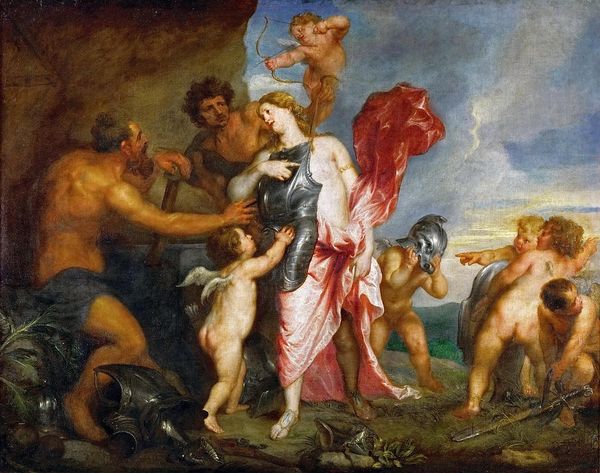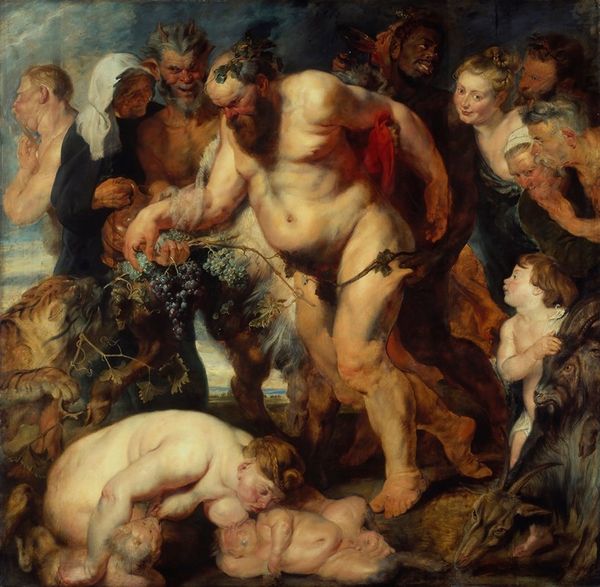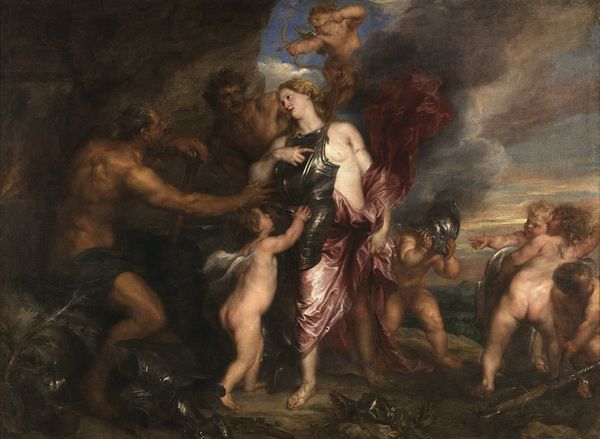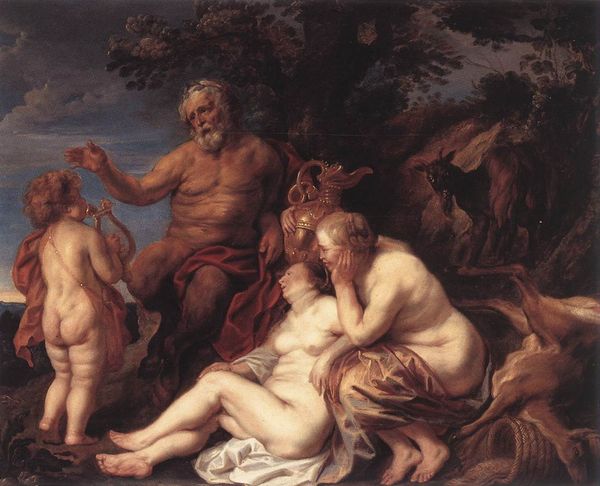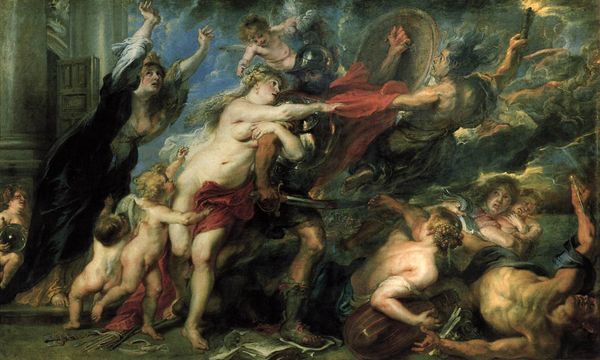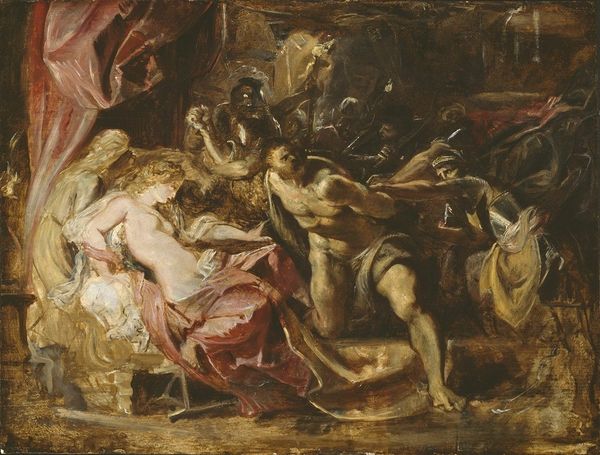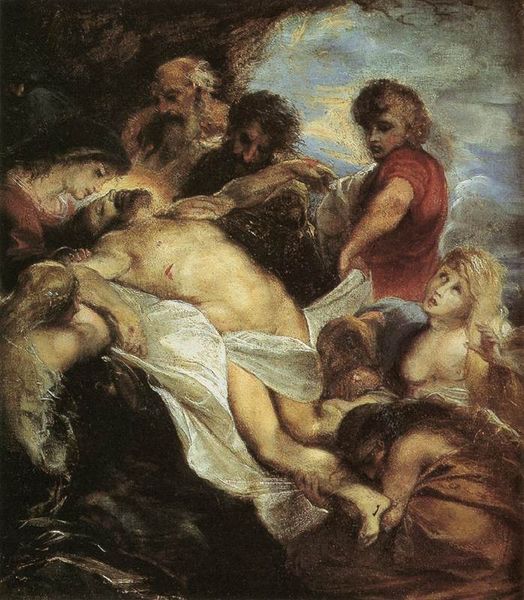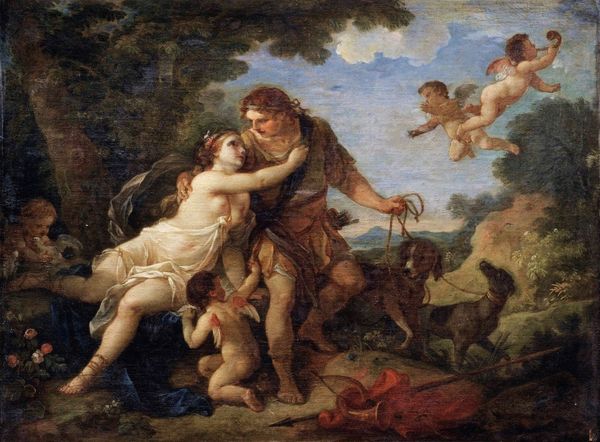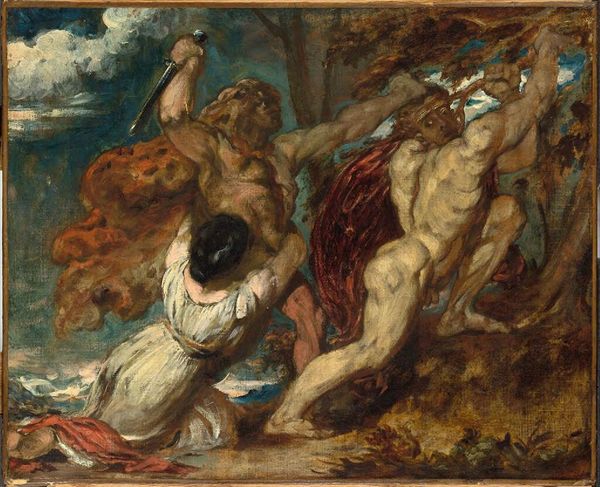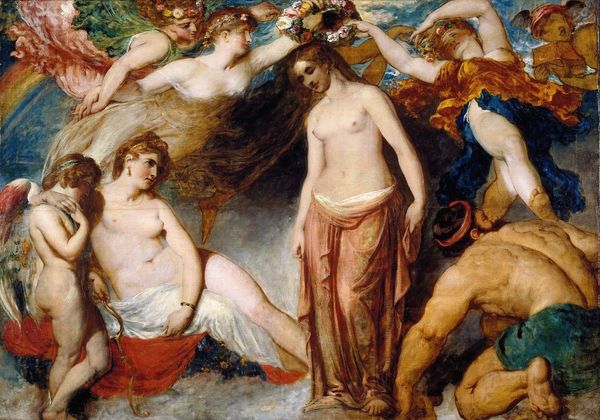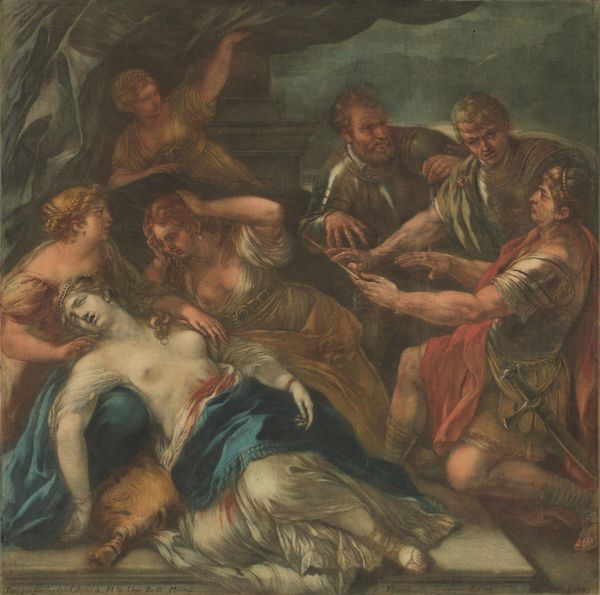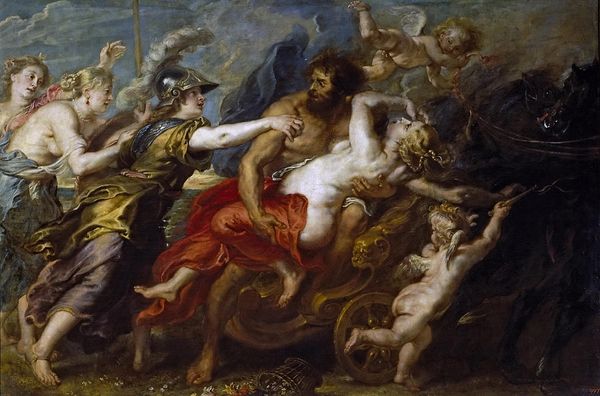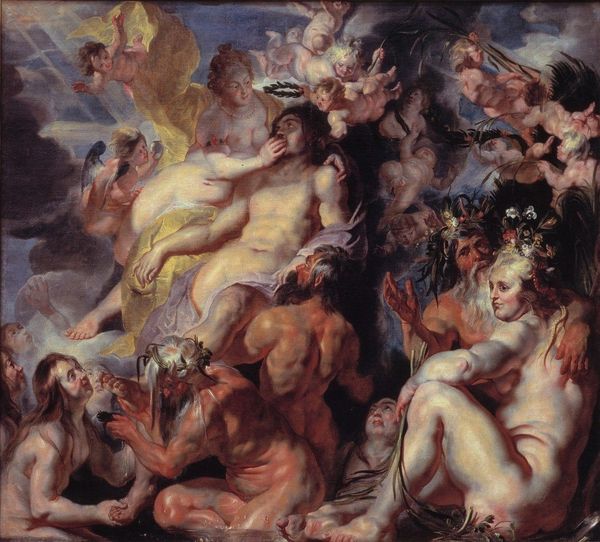
Copyright: Public Domain: Artvee
Hans Canon painted this interpretation of Samson and Delilah in 1877, using oil on canvas. In the 19th century, historical and biblical paintings weren't just about religion or the past. They were often used to reflect on contemporary society. Canon, who trained in Vienna and Germany, would have been aware of the art academies and their expectations. In this version of the well-known story, Delilah is about to cut Samson's hair, the source of his strength, while Philistine soldiers stand ready. The drama and the somewhat theatrical composition might be Canon's commentary on the politics of relationships, trust, and betrayal. It prompts us to consider questions about the balance of power within social structures. To understand this work, we can delve into the history of 19th-century art institutions, explore the contemporary reception of Canon's work through archival reviews, and analyze the social and political context in which it was created. Such investigations reveal how art interacts with and reflects its time.
Comments
No comments
Be the first to comment and join the conversation on the ultimate creative platform.
